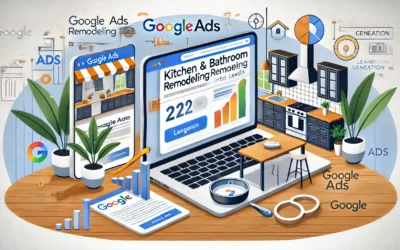In the world of digital marketing, it’s essential to understand the various strategies available to improve your online presence and drive business growth. Three key strategies are Search Engine Optimization (SEO), Search Engine Marketing (SEM), and Social Media Marketing (SMM). Each of these plays a unique role in digital marketing and offers distinct benefits. Here’s a breakdown of the differences between SEO, SEM, and SMM, along with the benefits of each.
What is SEO?
Search Engine Optimization (SEO) is the process of optimizing your website to rank higher in organic search engine results. The goal is to increase the quantity and quality of traffic to your site from search engines like Google, Bing, and Yahoo. SEO involves various techniques, including keyword research, on-page optimization, content creation, and link building.
Benefits of SEO
1. Increased Organic Traffic
SEO helps improve your website’s visibility in search engine results, driving more organic traffic to your site. Higher rankings often lead to increased clicks and more potential customers.
2. Cost-Effective
Compared to paid advertising, SEO is a cost-effective strategy. Once your website is optimized, it can continue to attract traffic without ongoing costs.
3. Credibility and Trust
Websites that rank higher in organic search results are often perceived as more credible and trustworthy by users. Effective SEO can help establish your brand’s authority in your industry.
4. Better User Experience
SEO involves optimizing your website’s structure and content, which can improve the overall user experience. A well-optimized site is easier to navigate and provides valuable information to visitors.
What is SEM?
Search Engine Marketing (SEM) is a broader term that encompasses various strategies to increase visibility in search engine results pages (SERPs) through paid advertising. The most common form of SEM is Pay-Per-Click (PPC) advertising, where advertisers bid on keywords and pay a fee each time their ad is clicked.
Benefits of SEM
1. Immediate Results
Unlike SEO, which can take time to show results, SEM can drive immediate traffic to your website. As soon as your ads go live, they can start attracting clicks and generating leads.
2. Targeted Advertising
SEM allows for highly targeted advertising based on keywords, location, demographics, and other criteria. This ensures that your ads are shown to the right audience, increasing the chances of conversions.
3. Measurable ROI
SEM campaigns are easily measurable, allowing you to track key metrics such as clicks, impressions, conversion rates, and return on investment (ROI). This data helps you refine and optimize your campaigns for better results.
4. Enhanced Visibility
SEM can significantly increase your visibility in search engine results, especially for competitive keywords. By appearing at the top of the SERPs, you can capture more clicks and attract more potential customers.
What is SMM?
Social Media Marketing (SMM) involves using social media platforms to promote your brand, engage with your audience, and drive traffic to your website. SMM includes both organic efforts, such as posting content and interacting with followers, and paid advertising, such as Facebook Ads and Instagram Sponsored Posts.
Benefits of SMM
1. Increased Brand Awareness
Social media platforms have millions of active users, providing an excellent opportunity to increase your brand’s visibility and reach a broader audience.
2. Engagement and Interaction
SMM allows for direct interaction with your audience, fostering engagement and building relationships. Responding to comments, messages, and reviews can create a loyal customer base.
3. Targeted Advertising
Social media platforms offer sophisticated targeting options, allowing you to reach specific demographics, interests, and behaviors. This ensures your ads are seen by the most relevant audience.
4. Content Distribution
Social media is an effective channel for distributing content and driving traffic to your website. Sharing blog posts, videos, infographics, and other content can attract more visitors and boost your SEO efforts.
5. Real-Time Analytics
SMM platforms provide real-time analytics, allowing you to monitor the performance of your posts and ads. This data helps you understand what works and what doesn’t, enabling you to adjust your strategy accordingly.
Combining SEO, SEM, and SMM for Maximum Impact
While each of these strategies offers unique benefits, combining them can create a more comprehensive and effective digital marketing strategy. Here’s how to leverage SEO, SEM, and SMM together:
1. Integrated Campaigns
Create integrated marketing campaigns that utilize SEO to attract organic traffic, SEM to drive immediate results, and SMM to engage with your audience and distribute content.
2. Consistent Messaging
Ensure consistent messaging across all channels. Your SEO content, SEM ads, and SMM posts should align with your brand voice and marketing goals.
3. Cross-Channel Promotion
Use social media to promote your SEO content and SEM ads. Share blog posts on social media, and use PPC ads to drive traffic to your social media profiles.
4. Data-Driven Decisions
Analyze data from all three strategies to gain insights into your audience’s behavior and preferences. Use this information to refine your campaigns and improve your overall marketing strategy.
Conclusion
Understanding the differences between SEO, SEM, and SMM, and the benefits of each, is essential for creating a successful digital marketing strategy. By leveraging the strengths of each approach, you can increase your online visibility, attract more traffic, and achieve your marketing goals. At Web Liftoff, we specialize in helping businesses develop and implement comprehensive digital marketing strategies. Let us help you maximize your online presence and drive growth.



